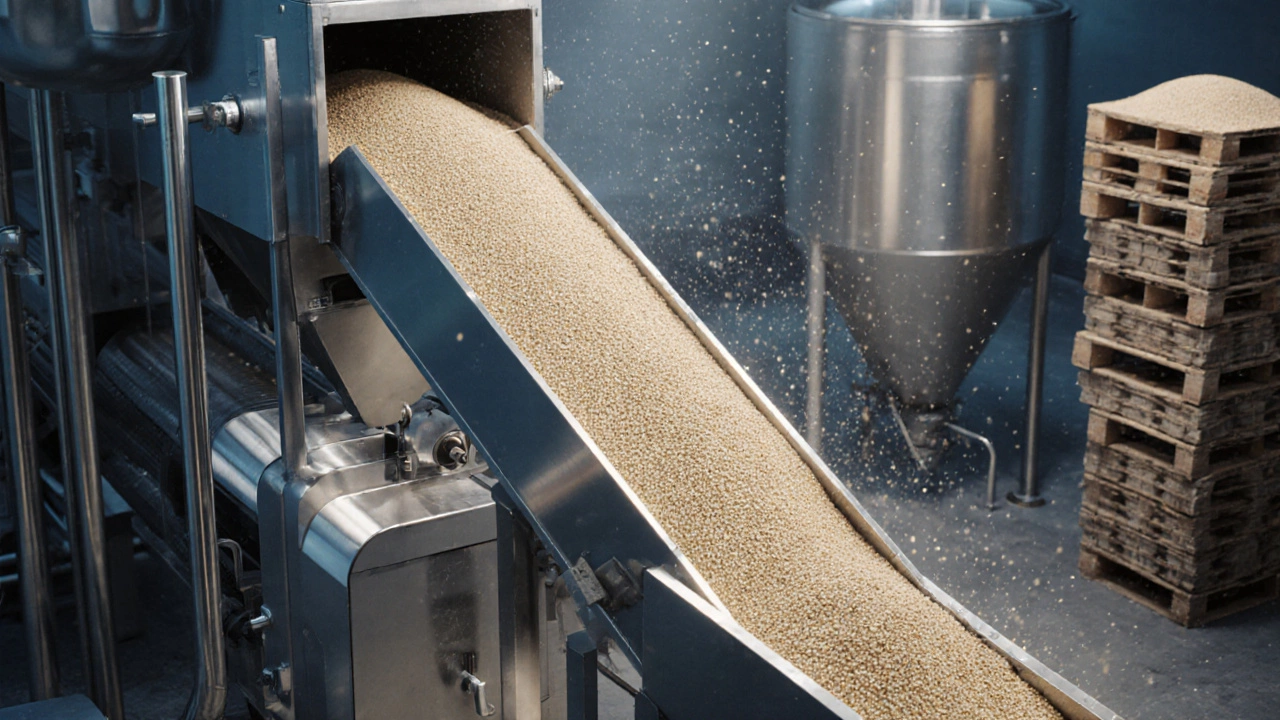- Top Car Brands Manufactured in India: The Complete 2025 Guide Aug 4, 2025
- Is AbbVie owned by Abbott? - Unraveling the corporate link between two pharma giants Oct 20, 2025
- Chemical Manufacturers India: Which State Leads Production? Jun 16, 2025
- Diverse Fields of Food Processing: Key Sectors and Innovations Explained Aug 3, 2025
- Steel Production: Which US City Takes the Crown? Jun 12, 2025
Unit Operations: The Building Blocks of Modern Manufacturing
When you hear the term Unit Operations, the basic physical steps—mixing, heating, separating, drying, and more—that turn raw material into a finished product. It’s also known as process steps. Process Engineering, the discipline that designs and optimizes those steps leans heavily on a solid grasp of unit operations. In the food arena, Food Processing, the series of unit operations that transform ingredients into safe, tasty meals is a daily reality. Whether you’re in a chemical plant, a pharma lab, or a bakery, the same core actions keep the line moving.
Why unit operations matter across industries
First, unit operations enable scalability. A simple mixing tank that works for a pilot batch can be enlarged, replicated, or linked with downstream separators without reinventing the whole process. That scalability is why Chemical Manufacturing, large‑scale production of plastics, fertilizers, and specialty chemicals relies on standardized equipment and repeatable steps. Second, they provide a common language. Engineers from a pharma company and a food producer can discuss “evaporation” or “filtration” and instantly understand each other’s needs, which speeds up collaboration and reduces mistakes.
Third, unit operations are the gateway to sustainability. By tweaking heat exchangers, we can recover waste heat and cut energy use. Adjusting a centrifuge’s speed can lower solvent consumption in pharma production. These tweaks translate into lower costs and greener footprints. Finally, they’re the foundation for quality control. Each operation comes with measurable parameters—temperature, pressure, residence time—that can be monitored and adjusted to keep product specifications tight.
Let’s break down a few key unit operations you’ll keep seeing. Mixing ensures uniform distribution of components, whether you’re blending polymer pellets or mixing dough. Heating drives reactions in a reactor or pasteurizes milk. Separation—through filtration, centrifugation, or distillation—pulls out the desired product from by‑products or solvents. Drying removes moisture from powders, crucial for stable pharma tablets or snack foods. Each of these steps can be linked in a chain that defines a complete process flow.
In pharma production, Pharma Production, the tightly regulated series of unit operations that create medicines often adds a layer of validation and sterility. The same mixing or drying equipment used in food processing must meet stricter cleanliness standards, but the core physics stays the same. That overlap is why professionals who master unit operations can move between sectors with ease.
So, what should you take away before diving into the article list below? Expect practical tips on optimizing each operation, real‑world case studies from chemical, food, and pharma plants, and a look at emerging technologies—like continuous flow reactors—that are reshaping how we think about unit operations. Whether you’re a seasoned engineer looking for the latest efficiency hacks or a newcomer eager to understand the basics, the collection ahead covers the full spectrum.
Ready to see how these concepts play out in actual projects? Scroll down to explore guides on everything from export garment logistics to the strongest metal for steel makers, all tied together by the fundamental idea that mastering unit operations unlocks better, faster, and greener production.
Food Processing Unit Classification: Types and Examples
- Aarav Sekhar
- Oct 25, 2025
Learn how food processing units are classified into primary, secondary and tertiary stages, plus thermal, mechanical, biochemical and packaging sub‑categories.
